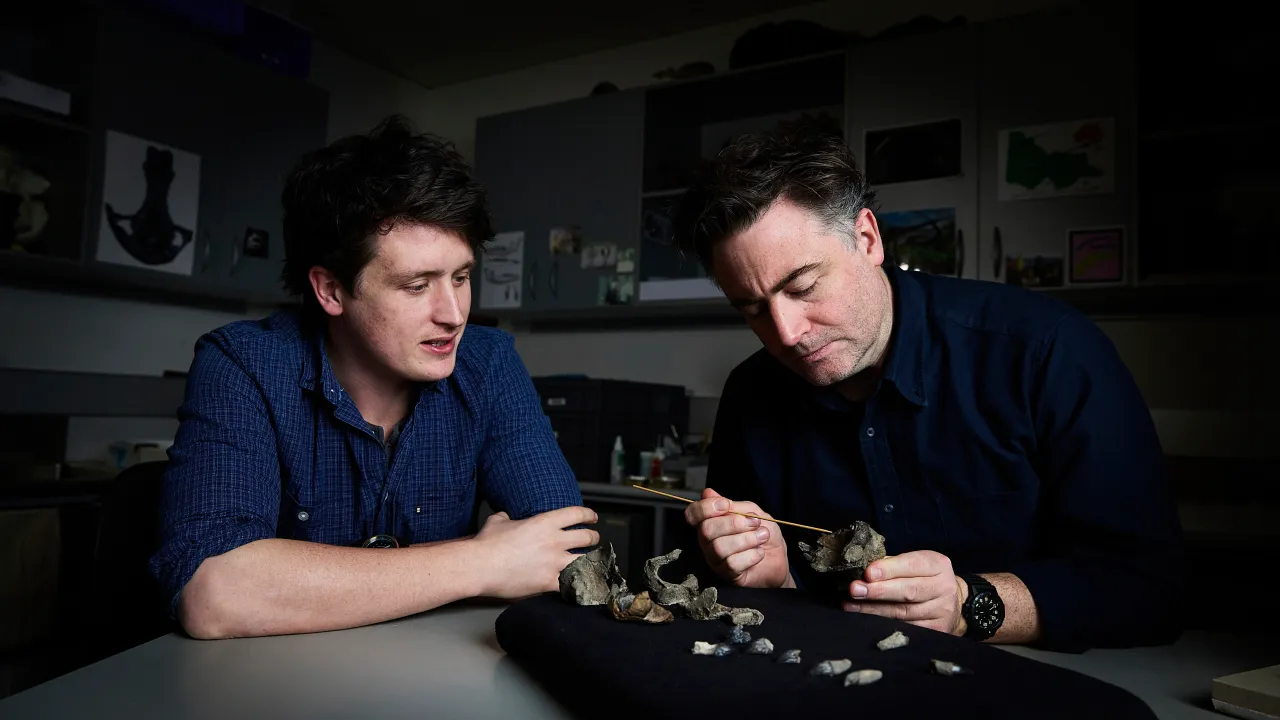
The depths of our planet’s prehistoric oceans continue to surprise scientists and enthusiasts alike. Recent discoveries have shed light on creatures that once roamed the ancient seas, revealing astonishing details about evolution and marine diversity. Among these revelations, one discovery stands out: a remarkably preserved ancient whale that bears an uncanny resemblance to a Pokémon face, complete with predator teeth and bulging eyes. This find not only excites paleontologists but also sparks curiosity about the evolutionary pathways that led to such unique features.
The Exciting Discovery: A Whale That Looks Like a Pokémon
In recent years, a team of paleontologists uncovered a fossil of a prehistoric whale along the Australian coast, dating back approximately 26 million years. As reported by the Hindustan Times, this whale’s skull exhibits features that seem almost extraterrestrial or fictional—bulging eyes, razor-sharp teeth, and a face that resembles a beloved creature from popular culture. The fossil’s detailed preservation has provided crucial insights into the morphology of ancient marine mammals.
Scientists describe this creature as having “a face only evolution could love,” owing to its exaggerated facial features, which evoke images of fantastical characters. The predator teeth indicate a carnivorous diet, suggesting that this whale was an active hunter in its ecosystem. Its large, prominent eye sockets imply keen vision—possibly an adaptation for hunting in low-light deep-sea environments.
Evolutionary Insights: From Bizarre to Brilliant
The discovery of this whale with a Pokémon-like face raises fascinating questions about the diversity and adaptability of marine mammals millions of years ago. Paleontologists believe that remarkable features—such as the prominent eyes and elongated facial structure—may have served specific ecological functions, such as better navigation, enhanced hunting capability, or communication among species.
Moreover, the presence of razor teeth and aggressive facial structure supports the idea that ancient whales were not always the gentle giants we associate with current species. Instead, they were fierce predators, equipped with formidable weaponry to survive in competitive ancient oceans. This challenges previous notions of whales only as baleen filter-feeders and expands our understanding of their evolutionary history.
Fossil Discoveries Around Australia: A Treasure Trove of Marine Ancestors
Australia’s coastline has proven to be a hotspot for discovering well-preserved marine fossils, many of which date back to the Miocene epoch. For example, a skull unearthed along the Australian coast was identified as a 26-million-year-old whale, showcasing bizarre dentition and skull morphology that highlights the diversity of prehistoric marine life.
The exploration of the Australian waters continues to uncover new species of ancient whales, revealing a “cornucopia” of tiny, bizarre, and interesting creatures that once thrived in the region. According to the Conservation news outlet, discoveries such as these help scientists piece together the evolutionary puzzle, illustrating how marine mammals adapted over millions of years to changing environments.
Recent findings also include a new species of whale located along Victoria’s Surf Coast, as reported by EurekAlert. This highlights the ongoing importance of Australian fossil sites in understanding marine evolution and the variety of life that once occupied the Earth’s oceans.
Implications for Understanding Marine Evolution
The discovery of such an ancient whale with distinctive and quirky features provides critical insights into the evolutionary processes shaping marine mammals. The exaggerated facial features and predator teeth suggest that some ancient whales adopted predatory strategies that differ from their modern counterparts.
Scientists also note the importance of soft tissue and skull preservation in fossil records, which helps decode the sensory and behavioral adaptations of extinct species. Features like bulging eyes could have indicated an evolutionary trend toward better low-light vision, possibly linked to deep-sea hunting.
Furthermore, fossil evidence indicates a diverse ecosystem in ancient oceans, with whales evolving along various paths—some becoming filter feeders, others becoming apex predators. These findings underscore the incredible plasticity and adaptability of whales as a group, showing that their evolutionary history is far more complex than previously thought.
Future Research and Ongoing Discoveries
The scientific community remains highly motivated to explore further fossil sites, especially along Australia’s coasts, which continue to yield remarkable specimens. New technologies such as high-resolution imaging, CT scanning, and molecular analysis are enabling researchers to analyze these ancient bones more thoroughly than ever before.
Apart from revealing physical features, these techniques may unlock genetic information or clues about the environmental conditions during the whales’ lifetimes. Such data can deepen our understanding of how climate change, oceanic shifts, and ecological pressures shaped marine life forms over millions of years.
In conclusion, each new fossil found offers a fresh window into the past, helping us comprehend the incredible diversity that once existed and how it influenced the evolution of modern whales.
The Significance of the Pokémon-Like Face Discovery
What makes this particular whale discovery so captivating is its facial appearance, reminiscent of a familiar Pokémon character. This bizarre resemblance highlights how unpredictable evolution can be—sometimes leading to features that seem almost fantastical or unnatural. While the face might seem comical, it signifies real biological adaptations, possibly advantageous in the whale’s habitat.
It also sparks public interest, bridging science with popular culture and inspiring curiosity about deep-sea creatures and prehistoric ecosystems. Such engaging discoveries can motivate future generations to pursue paleontology, marine biology, and environmental science.
Closing Thoughts: Uncovering Earth’s Ancient Marine Legacy
The recent revelation of an ancient whale with a Pokémon-like face underscores the continued importance of fossil discoveries in expanding our knowledge of Earth’s history. It reminds us that our planet’s past is filled with bizarre, beautiful, and sometimes shocking creatures that have long since disappeared.
As science advances and new fossils emerge from the depths of Australian waters, our picture of prehistoric marine life becomes richer and more nuanced. Each fossil has the potential to challenge existing theories, uncover new evolutionary pathways, and inspire awe for the incredible diversity of life that has graced our planet.
**For more updated news please keep visiting Prime News World.**








